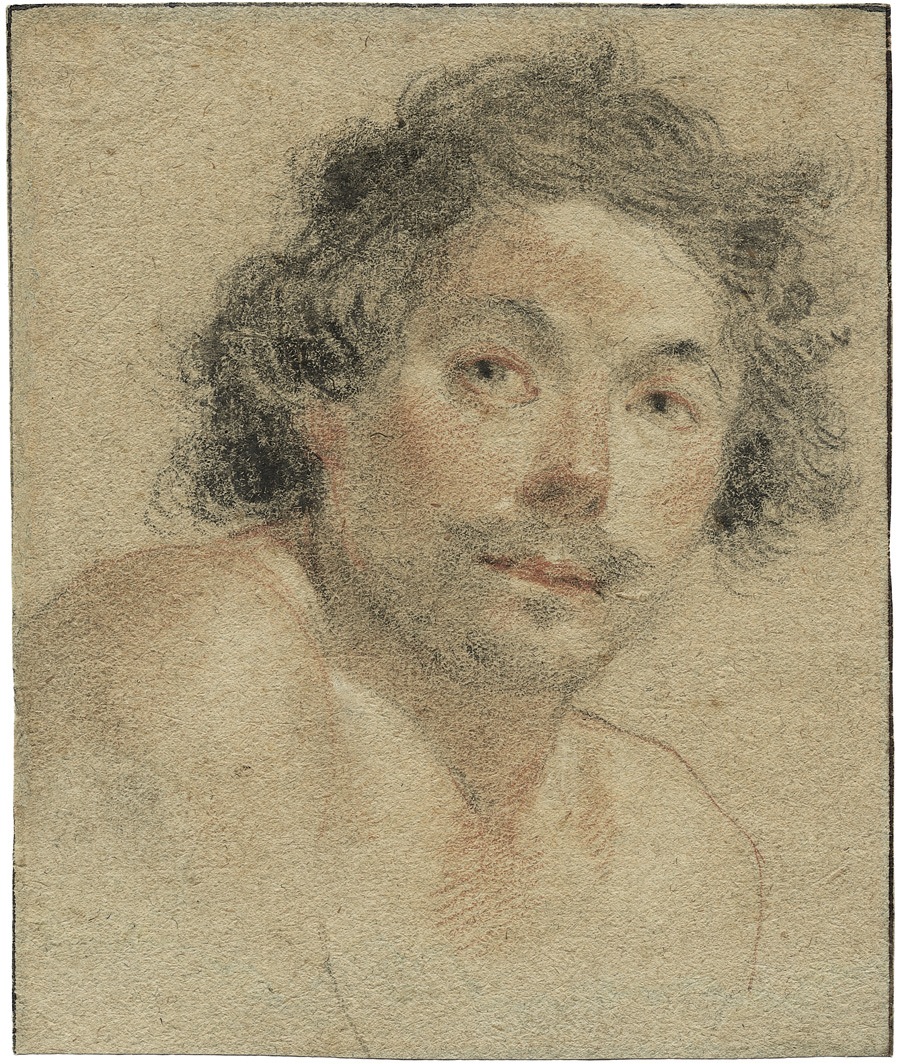Loading the page ...
Simon Vouet
(1590–1649, Paris)
Bust Portrait of a Young Man (Self-portrait?). Black and red chalk on brownish, finely structured laid paper. 14.1 x 11.8 cm. Circa 1620–25.
Simon Vouet is without a doubt the most important and versatile artistic personality that France produced during the reign of Louis XIII. Talented from an early age, educated and equipped with a natural sense of purpose, he painted with effortless virtuosity and remarkable powers of comprehension, creating a considerable œuvre that reflected the main artistic currents of his time. Vouet spent thirteen years – from 1614 to 1627 – in Rome, where such illustrious personalities as Cardinal Maffeo Barberini – later Pope Urban VIII – and wealthy aristocratic families like the Giustiniani, Orsini and Doria were among his patrons. In Rome he was exposed to Caravaggism and influenced by the achievements of the northern European landscape and genre painters resident there. At the same time he engaged in an intensive study of the works of such renowned predecessors and contemporaries as Annibale Carracci, Guercino, and Guido Reni, finally managing to transform all these influences into a highly suggestive stylistic idiom of his own.
This wonderfully lively little portrait of a young man is a rare and very personal testimony to Vouet’s Roman period. Its appeal lies in its astonishing spontaneity and artistic freshness. With wide open eyes the subject looks questioningly at the beholder, as though he has been surprised by the latter at an intimate moment. The tousled, uncombed hair and the bare shoulders underline the informal character of this momentary glimpse, suggesting that the young man has just been roused from slumber after a night of wild carousing. Hence the spontaneity and freedom of the drawing style of this exquisite portrait, which was probably executed around 1620–25 and whose technique shows certain correspondences with the portrait drawings of Ottavio Leoni. The thesis of a self-portrait is a persuasive one and cannot be dismissed out of hand. The similarity of the subject’s features to other known portraits of the artist is very convincing, although Vouet has portrayed himself without his characteristic "Van Dyck" beard.
